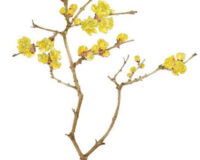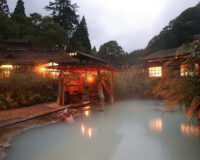

In this series we explore the four seasons in Japan and the poetic nijūshi sekki (twenty-four seasonal divisions) of Japan’s ancient calendar, expressed in the waxing and waning of the moon and the movement of the sun across our skies.
Text : 鈴木充広 Michihiro Suzuki / Illustrations : Aso Yuriko / English Version : Judy Evans
Keyword : Japan’s Ancient Calendar / Japan's Ancient Calendar Series / Traditions / O-Higan
Summer Heat and Winter Cold – This Too Shall Pass
In Japan we have a saying that goes, “atsusa samusa mo higan made”, meaning that neither heat nor cold last beyond higan, the week of the equinox. The idea behind this expression is that by the time the spring or autumn equinox rolls around, the biting cold of winter or the searing heat of summer will have abated, giving way to much more pleasant temperatures. You’ll often hear this expression in Japan just when temperatures outside are at their most unbearable. It’s a reminder to us all that this, too, shall pass.
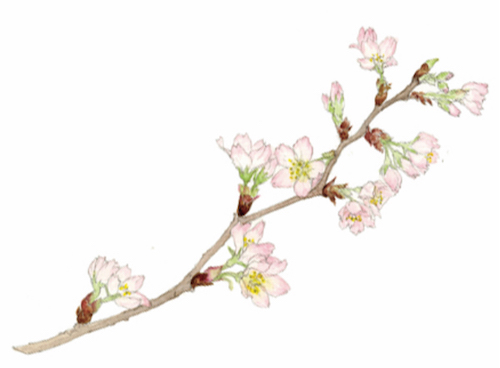
Higan (or, more formally, O-higan) comes twice a year, in spring and autumn. Both last for seven days, centred on either the Vernal or the Autumnal Equinox. The first day of Higan is known as “Higan no Iri” , while the last day is “Higan-ake”. According to the modern calendar, spring Higan lasts seven days from March 17th or 18th, with the Vernal Equinox being March 20th or 21st; while autumn Higan lasts seven days from September 19th or 20th, with the Autumnal Equinox being September 22nd or 23rd.
The origins of O-Higan
“Higan” is a Buddhist term that comes (via Chinese) from Sanskrit. The literal meaning, “the distant shore”, refers to the far shore of the river separating this life from Nirvana, or the world of enlightenment. This has come to be regarded as Buddhism’s Western Pure Land (paradise) where the spirits of the ancestors reside. Higan, when the sun sets directly in the west indicating the location of the Western Pure Land, is a time when people visit the graves of their ancestors.
In addition to visits to ancestral graves, which are made with the purpose of appeasing the spirits of the ancestors and gaining virtue, Buddhist temples perform a mass known as Higan-e to console the souls of the dead. This is a week when the faithful pray to the Buddha, offer alms and perform good deeds, all in the hope of eventually being delivered to the shores of Paradise, or Higan.
Higan rituals have been performed in Japan for centuries. In fact, Japan’s first Higan-e ceremony was performed over twelve centuries ago, in 806. Interestingly, of all the countries where Buddhism is practised, only Japan observes Higan.
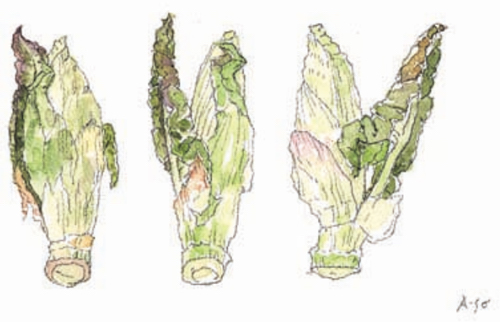
Higan and the Calendar
In the Japanese calendar, Higan is classified as “zassetsu”, one of the days signifying seasonal change. The zassetsu were not part of the Nijūshi-sekki (the 24 seasonal turning points of the old calendar), but were later included in the calendar as information considered essential to daily life.
It was at the behest of Kyōto’s Enryaku-ji Temple that Higan was added to the Japanese calendar. Every year at Higan, Enryaku-ji would choose a particularly eloquent monk to deliver the Higan-e sermon. So renowned was this service that men and women of faith would flock to this Buddhist temple at the top of Mt Hiei to hear the sermon.
The problem was that it was difficult at that time to work out from the calendars just when Higan would take place and it was not uncommon for people to arrive on the wrong day for the Higan-e mass. Considering that the only form of transport available at the time was one’s own two feet, and given also that Enryaku-ji was on the top of a mountain, spending several days walking there only to find that the mass had already taken place several days earlier was an issue indeed, and one that needed to be resolved.
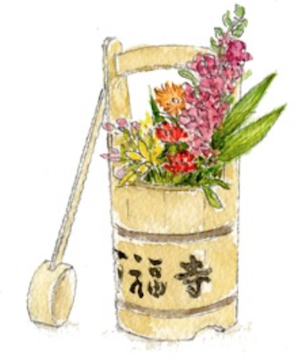
Calendars and almanacs are created for people to use. Not just to be able to predict the changing seasons and the ebb and flow of the tides, but also to mark the social events and rituals that smooth the path of community life. While having Higan in the calendar wasn’t necessary for predicting seasonal changes, it absolutely needed to be in the calendar for the pious men and women of Japan who wanted to pray for the souls of their ancestors at the appropriate time.
Botamochi and O-hagi Rice Cakes
Botamochi and o-hagi rice cakes are often placed on the family butsudan altar at Higan, and are strongly associated with this time of the year. Offerings of other foods, such as dango, norimaki and inari-zushi, are also common, but it’s botamochi and o-hagi that most readily spring to mind at the thought of Higan.
The two sweets are almost identical – basically the same thing with different names. In spring we have botamochi, which are named after the botan, or tree peony, a flower that blooms in spring. O-hagi are named for autumn-blooming bush clover, so the rice cakes offered at autumn Higan are called o-hagi.
Both are coated in sweet anko bean paste, either koshi-an, which is passed through a sieve to remove the skins, or tsubu-an, where the beans are left whole. I recall my mother telling me, when I was a boy, that botamochi were a bit bigger and covered in smooth koshi-an to resemble the smooth flower of the tree peony, whereas o-hagi, covered in tsubu-an, were a bit bumpy in texture, just like the bush clover flower.
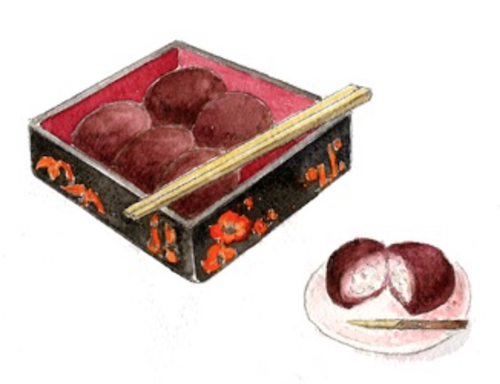
O-higan is a time when the climate is pleasant and mild. Luckily for those of us in Japan, both the Vernal and Autumnal Equinoxes, which fall right in the middle of Higan, are public holidays. Next Higan, how about paying a visit to the graves of your ancestors, just like the faithful who gathered on Mt Hiei – even though your piety may be tinged with the worldly thought of the botamochi you’re going to eat afterwards!



